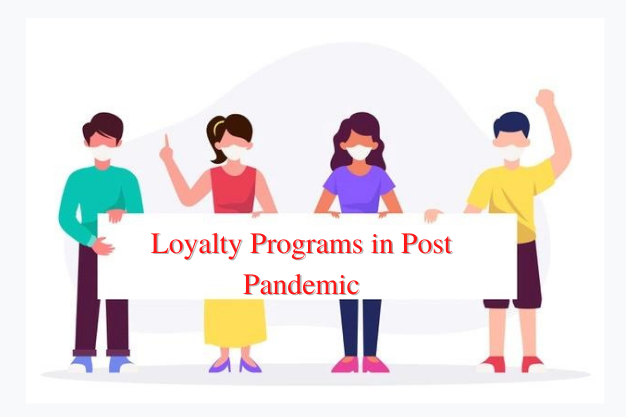Industries in various sectors have been seriously impacted by COVID-19’s breakout, leading to the world economy’s downfall. New research estimates that the pandemic has reduced global GDP by 6.5 – 9.7 per cent. The crisis is spreading throughout the world, and marketers are scrambling to keep their companies relevant, if not profitable, in the face of it. Economic and industry-wide financial implications are astounding, and businesses are scrambling for a foothold in an ever-shifting environment. It’s changed the way we shop, work, and live. There’s no denying that it’s still having an impact on consumer purchasing patterns.
A new mentality has emerged stronger since the marketers aim to continue developing loyalty after the epidemic with Loyalty Management System. Loyalty used to be difficult, but customer purchasing habits and expectations have evolved along with them. Premium programs help retailers build stronger relationships with their customers. Programs like this enable companies to provide more value to their most loyal consumers.
The strategy now with Loyalty Management System is to get advantages like immediate savings, free delivery, and access to special events the Customers must pay a membership fee. And it is working. The numbers don’t lie.
You May Also Like: Benefits of Implementing Influencer Loyalty Program for Your Brand
About 94 per cent of the customers who pay for the premium loyalty program do at least one transaction each month with Loyalty Management System. Most customers (about 88%) prefer a retailer’s premium loyalty program over a rival’s offer at a cheaper price. 70% of premium loyalty program members are expected to switch to a new premium loyalty program by the year 2020, according to research. Seventy per cent of consumers say they’d join a premium loyalty program is provided by their preferred store, and the perks were worthwhile.
It’s high time businesses remain at the forefront of customers’ minds as they increasingly shop online and grow less loyal to the companies they used to love. Now is the perfect moment to set your loyalty program apart from the competition and thrive.
Despite the seeming dominance of internet buying, going to a physical store will never go out of style. COVID-19 has indeed raised awareness about the advantages of cashless purchasing. Physical shops need to comply with safety and customer preferences laws.
Measures like installing plastic counter barriers or using cutting-edge technology that make the checkout process completely touch less are examples of this. Paying using a contact less card will be required in all shops as a first step. Touch less interaction will be aided by receipt scanning and scanning gadgets.
On the other hand, loyalty programs may benefit from the same concept now that it makes more sense than ever in the post-pandemic world. Consider utilizing a Payment gateway where consumers can earn and redeem points using a digital loyalty card on their phone instead of exchanging physical cards.
In 19 of the 27 markets studied, customization was the most important pillar for customer loyalty. Nevertheless, to seem more relevant, businesses from all sectors must reconsider and go one step further with their data gathering and segmentation approach.
While this data is available, companies and merchants may use it to create hyper-personalized email communications and distribute material based on a customer’s demographics such as age or loyalty status or personality qualities.
With declining participation, many loyalty programs throughout the loyalty landscape are being pushed to extend point expiry dates and tier eligibility. Due to worldwide lockdown, certain redemption alternatives are no longer relevant, and the redemption catalogue’s options need to be moved to meet customers where they are – at home. There is no time like the “now” to get your customers to stay on board.
